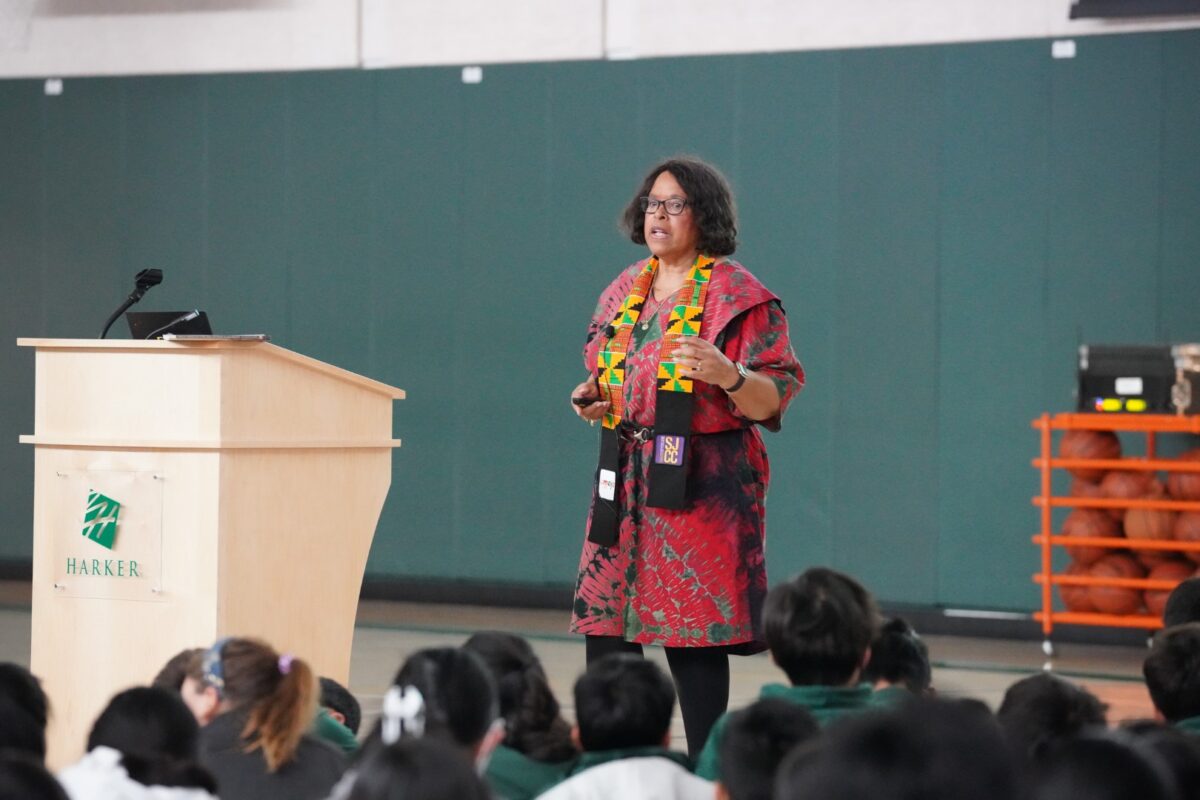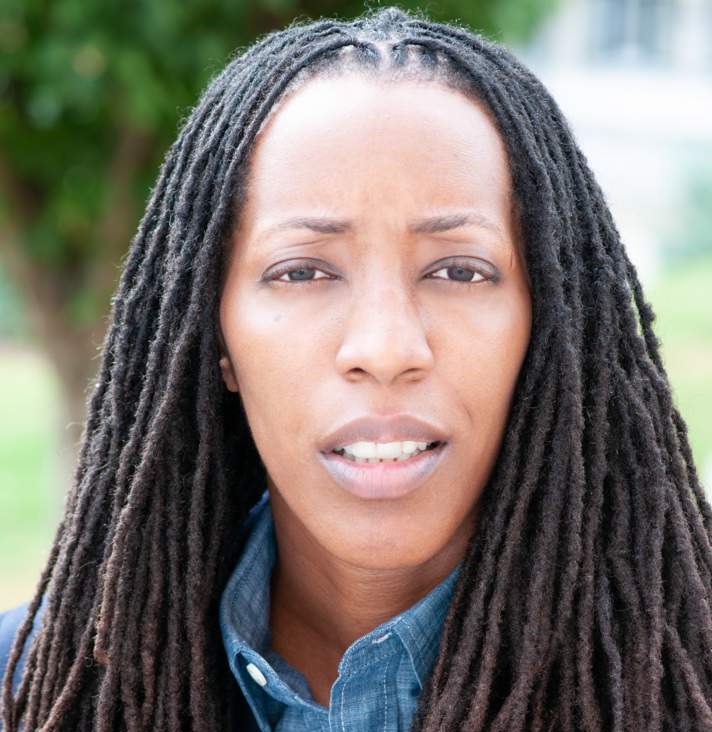Last week, a special middle school assembly featured author and historian Jan Batiste Adkins, who shared the history of African Americans in the Bay Area and Santa Clara County area.
Black History Month
Bettina Love delivers webinar on Black history, racism and abolition
To recognize the beginning of Black History Month, Harker’s Black Student Union and Student Diversity Coalition hosted a webinar by Dr. Bettina Love, the Athletic Association Endowed Professor at the University of Georgia and author of “We Want to Do More Than Survive: Abolitionist Teaching and the Pursuit of Educational Freedom.”

